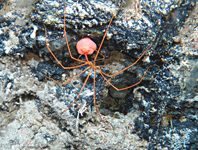Abstract
The norms regarding validity and formulation of specific epithets in Zoology are ruled by the International Code of Zoological Nomenclature (ICZN 1999), a published convention of the International Commission on Zoological Nomenclature, that operates under a vast array of underlying nomenclatural principles. One of its components is Article 31, which rules upon the formation of specific or subspecific epithets for personal names, by the use of nomina (sensu Dubois 2007) under genitive case. As discussed by Dubois (2007), this has erroneously led several authors to assume that the aforementioned nomina should exclusively end in “-i” if dedicated to a man (or -orum, for plural), and in “-ae” if dedicated to a woman (or -arum, for plural) (being also important to state that this provision is sensitive on whether the chosen nomina is a modern personal name (Art. 31.1.2) or not (Art. 31.1.1)), leading to several independent proposed emendations to these names, which authors have considered as “wrong”, under the Code; the author then, proceeds to conduce a careful and extensive literature review on matter, proposing an amendment to the Code, correcting several unjustified emends, and highlighting that “[...] the stem of such a nomen is determined by the action of the original author when forming the genitive, and should be preserved by subsequent authors. Any subsequent demonstrably intentional change in the stem or ending of this nomen, other than correction of an inadvertent spelling error, must be considered an unjustified emendation [...]” (Dubois 2007: 64).
References
Abegg, A.D., Malta-Borges, L., Carvalho, J.D.T., Mario-Da-Rosa, C. & Di Mare, R.A. (2016) Cases of unjustified emendations of scientific names dedicated to people in tarantulas (Mygalomorphae: Theraphosidae). Revista Colombiana de Entomología, 42 (2), 201–202.
https://doi.org/10.25100/socolen.v42i2.6702
Dubois, A. (2007) Genitives of species and subspecies nomina derived from personal names should not be emended. Zootaxa, 1550 (1), 49–68.
https://doi.org/10.11646/zootaxa.1550.1.2
ICZN (1999) International Code of Zoological Nomenclature. Fourth edition. International Trust for Zoological Nomenclature, London, xxix + 306 pp.
Nemésio, A. & Dubois, A. (2012) The endings of specific nomina dedicated to persons should not be emended: nomenclatural issues in Phalangopsidae (Hexapoda: Grylloidea). Zootaxa, 3270, 67– 68.
Stekolshchikov, A.V. & Buga, S.V. (2018) The aphid fauna (Hemiptera, Sternorrhyncha, Aphidomorpha) of Murmansk province (Russia), with description of Aphis khrulevi sp. nov. and Dysaphis karyakini sp. nov. and males of Chaitophorus nigricantis Pintera, 1987. Zootaxa, 4527 (4), 451–493.
https://doi.org/10.11646/zootaxa.4527.4.1
Stekolshchikov, A.V. & Buga, S.V. (2019) Emendation of incorrect original spellings of two aphid species names recently established (Hemiptera, Aphididae). Zootaxa, 4551 (3), 395.
https://doi.org/10.11646/zootaxa.4551.3.9
Frost, D.R. (1985) Amphibian species of the world. A taxonomic and geographical reference. Allen Press Inc. & Association of Systematics Collections, Lawrence, Kansas, 732 pp.
Frost, D.R., Grant, T., Faivovich, J., Bain, R.H., Haas, A., Haddad, C.F.B., de Sa´, R.O., Channing, A., Wilkinson, M., Donnellan, S.C., Raxworthy, C.J., Campbell, J.A., Blotto, B.L., Moler, P., Drewes, R.C., Nussbaum, R.A., Lynch, J.D., Green, D.M. & Wheeler, W.C. (2006) The amphibian tree of life. Bulletin of the American Museum of Natural History, 297, 1–370.
https://doi.org/10.1206/0003-0090(2006)297[0001:TATOL]2.0.CO;2
Kraus, F. (2012) Identity of Nyctimystes cheesmani (Anura: Hylidae), with description of two new related species. Zootaxa, 3493, 1–26.
Menzies, J.I. (1976) Handbook of common New Guinea frogs. Wau Ecology Institute, Papua New Guinea, 75 pp.
Menzies, J.I. (2006) Frogs of New Guinea and the Solomon Islands. Pensoft, Sofia, 146 pp.
Parker, H.W. (1936) A collection of reptiles and amphibians from the mountains of British New Guinea. Annals and Magazine of Natural History, Series 10, 17, 66–93.
https://doi.org/10.1080/03745481.1936.10801389
Peters, W. & Doria, G. (1878) Catalogo dei rettili e dei batraci raccolto E. Beccari, L.M. d’Albertis e A.A. Bruijn nella sotto-regione Austro-Malese, Annali dei Museo Civico di Storia naturale, 13, 325–450.
Richards, S.J. (2007) A new species of Nyctimystes (Anura: Hylidae) from Papua New Guinea and comments on poorly known members of the genus. Phyllomedusa, 6, 105–118.
https://doi.org/10.11606/issn.2316-9079.v6i2p105-118
Rosauer, D., Lafffan, S.W., Crisp, M.D., Donnellan, S.C. & Cook, L.G. (2009) Phylogenetic endemism: a new approach for identifying geographical concentrations of evolutionary history. Molecular Ecology, 18, 4061–4072.
https://doi.org/10.1111/j.1365-294X.2009.04311.xTyler, M.J. (1964) An investigation of the systematic position and synonymy of Hyla montana Peters and Doria (Anura, Hylidae). Zoologische Abhandlungen aus dem Staatliches Museum fur Tierkunde in Dresden, 27, 265–270.
Tyler, M.J., & Menzies, J.I. (2013) Case 3613 Nyctimystes cheesmani Tyler 1964 (Amphibia, Anura, Hylidae): request for setting aside the name in favour of Nyctimystes cheesmanae Tyler 1964. The Bulletin of Zoological Nomenclature, 70 (1), 30–32.
https://doi.org/10.21805/bzn.v70i1.a7
Wiens, J.J., Kuczyinski, C., Xia, H. & Moen, D. (2010) An expanded phylogeny of treefrogs (Hylidae) based on nuclear and mitochondrial sequence data. Molecular Phylogenetics and Evolution, 55, 871–882.
https://doi.org/10.1016/j.ympev.2010.03.013Zweifel, R.G. & Tyler, M.J. (1982) Amphibia of New Guinea. In: Gressitt, J.L. (Ed.), Monographiae biologicae, Dr. W. Junk, The Hague, pp. 759–801.
https://doi.org/10.1007/978-94-009-8632-9_38
Zweifel, R.G. (1980) Results of the Archbold Expeditions. No. 103. Frogs and lizards from the Huon Peninsula, Papua New Guinea. Bulletin of the American Museum of Natural History, 165, 387–434.

